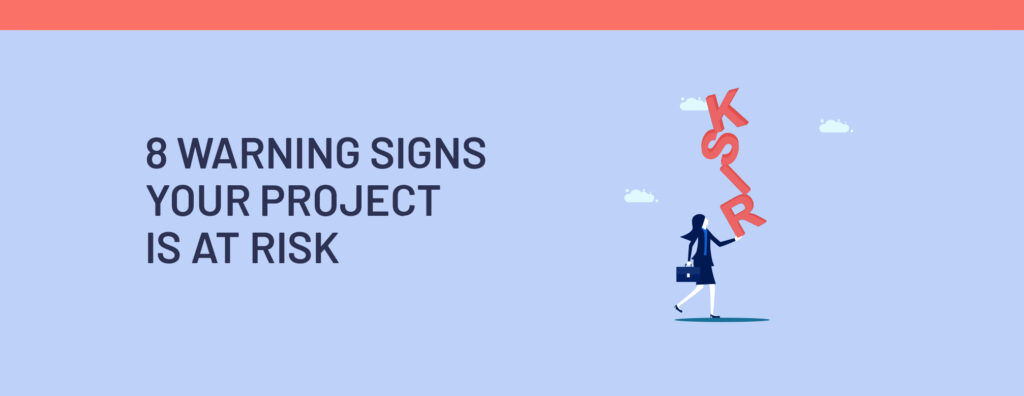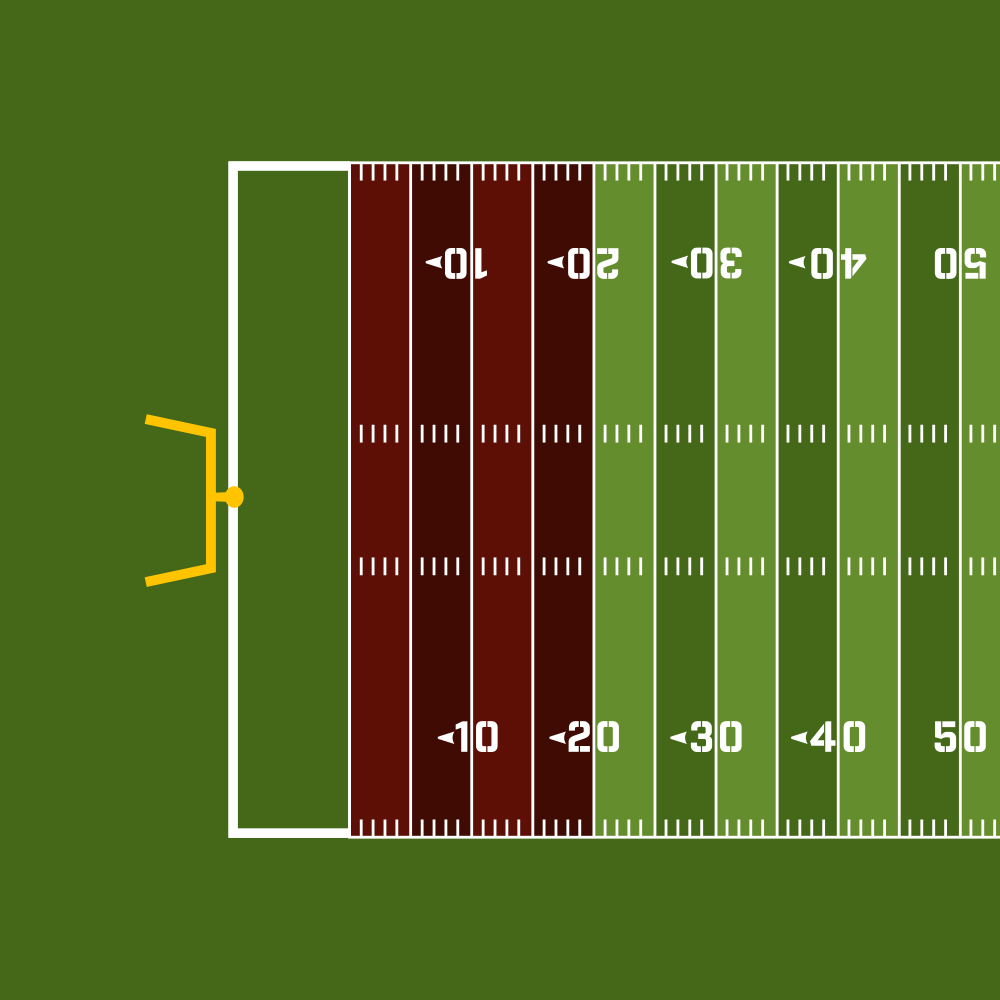
In the construction industry, project managers are taught to be proactive, anticipate risks, and plan accordingly. But the truth is when managing large projects, it is sometimes hard to see the warning signs that projects are struggling. We often work in large teams with responsibilities distributed across many people, making it difficult to see the entire project. The churn of day-to-day tasks can make pausing and assessing the project’s overall health challenging, but we know it is critically important to do just that.
What if some early warnings could be easily spotted? What if you could see the flashing lights and act early? Identifying early signs of project distress could provide an opportunity to rectify the situation before the project feels the ramifications.
I offer this list of warning signs as a starting point. It is not an exhaustive list, but it should help steer you in the right direction and give you an indication of a project’s vulnerabilities. The list is based on my own experience as a project manager and risk manager, but also as a claims analyst and expert witness who has analyzed the root causes of poor project outcomes. It also incorporates insights from my many colleagues and reflects on our industry’s best practices and professional standards.
Warning Sign #1 – Project Governance
- Have meetings become contentious? Has correspondence taken on a hostile tone?
- Are issues lingering for weeks or months without resolution? Is it unclear who has the authority to make critical decisions?
These are signs that your project governance and communication protocols have gone dormant or may never have been clearly established. They also indicate that the project leaders have not invested time in prioritizing and promoting overall team health. Without a highly functioning team and proper collaboration mechanisms to problem solve and make decisions, project delays and associated costs can accumulate and the scope and quality of the project itself may not meet expectations.
Warning Sign #2 – Design Management
- Are design submissions persistently late? Are design reviews taking too long?
- Are there many design review comments from each submission?
- Do design review comments remain open and unaddressed submission after submission?
Problems with design and design management could result from a lack of skilled design resources, inadequate design oversight, or insufficient owner engagement in the scoping and design review process. Ignoring these signs could lead to serious project consequences.
Warning Sign #3 – Schedule Management
- Has work proceeded but the project still does not have an accepted baseline schedule?
- Has the work progress slipped behind schedule projections but the reasons for the delays are unclear?
- Does the work sequence in the field not resemble that shown in the construction schedule?
- Are contract earnings falling well behind the scheduled forecast?
When a project team struggles to align on the baseline schedule, accurately track project progress, explain why the project is experiencing delays, or constructs the project in a way that no longer resembles the project schedule, these are signs that the project needs schedule management discipline. Schedules are meant to inform and guide, and when they are not effectively utilized, projects are at risk.
Warning Sign #4 – Project Administration
- Is it taking too long to get submittals reviewed or requests for information (RFI) addressed? Are submittals being rejected and resubmitted multiple times?
- Are project meetings not taking place consistently every week? Are project meetings poorly attended? Are key decision-makers not regularly attending project meetings?
Successful projects maintain a project management plan, and successful teams are committed to adhering to their project administration protocols. These warning signs indicate that project administration is lacking, and the team will feel this daily in all areas of operations.
Warning Sign #5 – Quality Management
- Are daily inspection reports, quality control and materials testing reports, weekly and monthly progress reports missing or lagging?
- Are non-compliance notices mounting? Is there a pattern of accumulating construction deficiencies?
- Have damaged materials or equipment been delivered to the site? Are construction components delivered to the site but not adequately protected?
These are indicators of a lapsed quality management program. If not addressed, it will lead to rework, delays, and added costs. While the responsibility to fix quality issues may rest with the contractor, the impact on the project will affect everyone, so it is important for the entire project team to engage in rectifying this.
Warning Sign #6 – Safety Management
- Does the project have a dedicated safety manager? Are safety personnel certified and experienced with the specific type of construction on the project?
- Are regular site safety training taking place? Are all project participants being trained?
- Is the site properly maintained? Is it clean and free of debris and obstructions?
- Are job hazard analyses being developed prior to starting each new element of work?
- Are project safety metrics being tracked and discussed in project meetings? Are metrics trending positively?
There are no more important indicators of project success than safety management and safety culture. Warning signs can be seen even at the earliest stage of the project. Not addressing these warning signs can have devastating consequences for personnel and, in turn, the project.
Warning Sign #7 – Cost Management
- Are requests for changes slow to be issued? Are they being issued late in the project? Are changes being made without consideration of their time impacts?
- Are the change proposals incomplete? Are the proposed costs overstated?
- Is the review and negotiation of changes taking too long? Is it affecting the ability to proceed with work?
- Are there frequent disagreements about payment applications and progress? Is payment slow to come?
Money is the lifeblood of any project. It is difficult to achieve project objectives if monthly pay applications and the cost of changes are not properly managed and money is not consistently flowing to those performing the work. Cost issues can quickly impact the project’s progress, so it is critical to address them properly.
Warning Sign #8 – Project and Site Management
- Is the contractor or owner (or any project stakeholders) struggling to staff the project? Is there frequent staff turnover?
- Is the organization of the contractor’s team unclear or changing? Is it unclear who is in charge and who has the authority to make decisions?
- Have there been complaints from subcontractors regarding timely or lack of payment?
- Have there been unanticipated acquisitions or mergers?
- Have there been any subcontractor defaults?
- Are materials and equipment being ordered late? Is the project experiencing delivery delays? Is there a lack of information about dates for pending deliveries?
Whether related to personnel, procurement, or overall corporate management, volatility can impact project progress and serve as a warning sign that a contractor or other project stakeholder has not adequately planned the project or is experiencing some form of internal turbulence.
These eight warning signs may indicate that a project is experiencing some distress. However, this does not mean that the project will not ultimately be a success. If ignored, they can impact the project’s safety, quality, cost, or schedule. If spotted early, there are many mitigations that can ward off long-term impacts.
Instead of using these indicators solely to detect problems, they can also be used to guide the selection of project management tools. This can help in becoming more effective project managers who foresee and anticipate instead of only reacting and responding. These same warning signs also serve as:
- Elements in our project health and readiness assessments
- Key performance indicators to monitor throughout the project
- Risks to be entered, tracked, and managed in the project risk register
When we recognize the potential pitfalls and early warning signs, we can respond sooner. More importantly, planning for these early warning signs can potentially help avoid these risks altogether.
Download a copy of this blog here.




